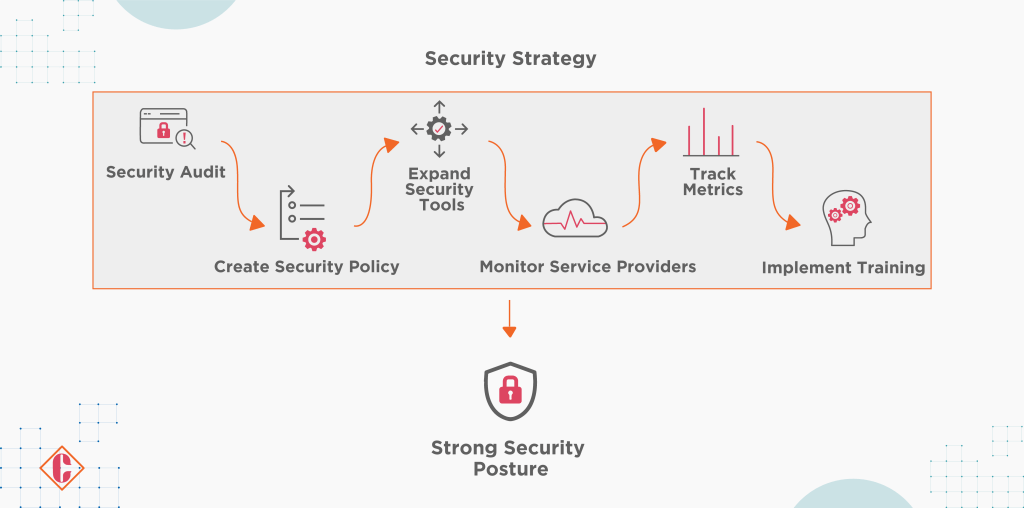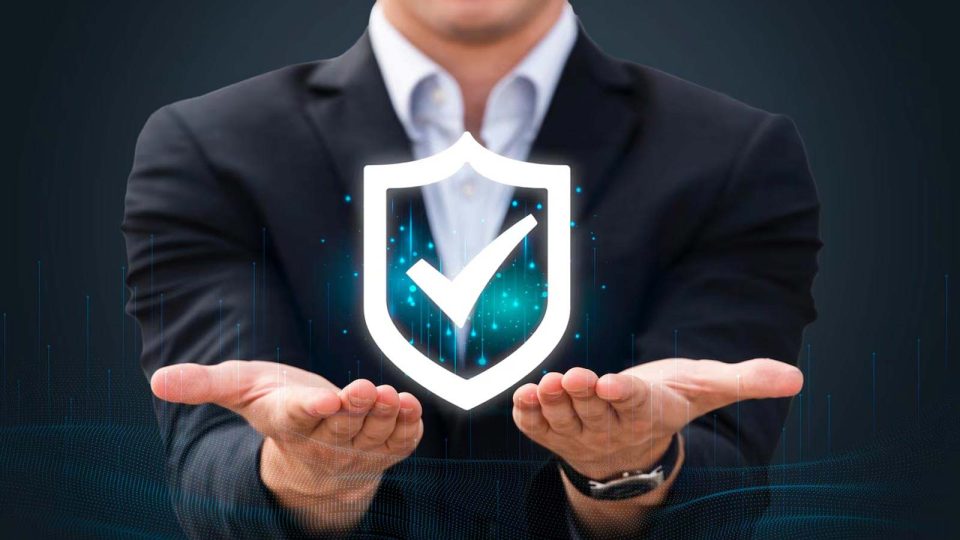A Chief Information Security Officer (CISO) is a senior executive overseeing an organization’s information, cyber, and technology security. Their role involves developing, implementing, and enforcing security policies to protect critical data. In today’s landscape of frequent cyberattacks, the importance and visibility of the CISO have significantly increased.

Businesses must invest heavily in fortifying their infrastructures, networks, and sensitive data against evolving threats. Emerging technologies, like generative AIs such as ChatGPT, add another layer of complexity to cybersecurity considerations.
Defining the CISO Role
A Chief Information Security Officer (CISO), positioned among the C-suite, assumes the senior executive role responsible for architecting and executing an information security program safeguarding an organization’s data and systems. Their primary focus is managing risk while ensuring the organization’s security posture aligns with its overarching business objectives. Typically, CISOs possess backgrounds in information security, computer science, or related fields, substantiating their expertise in this domain.
The requisite skills for a successful CISO encompass a comprehensive grasp of security technologies and a profound understanding of business operations and risk management. Moreover, effective communication across technical and non-technical strata remains paramount. CISOs must convey the organization’s security stance to senior management, especially when improvements are imperative.
Evolution of the CISO Role
While the term “CISO” originated around 1994 at Citigroup, the essence of the role has exhibited remarkable continuity over nearly three decades. Initially focused on governance, policymaking, and traffic monitoring, the role has since evolved considerably. CISOs serve as connectors, fostering collaboration between technical and non-technical stakeholders, subject matter experts, security professionals, and developers. This dynamic shift underscores the expansive nature of the CISO’s responsibilities, transcending traditional boundaries to encompass multifaceted strategic and collaborative domains.
CISOs now play a pivotal role in steering high-level discussions about security strategy and imparting insights regarding prevailing trends and risks that impact the organization. Their responsibilities have broadened to encompass comprehensive evaluations of the organization’s technology risks. This includes securing remote workforces, leading cybersecurity governance, risk, and compliance initiatives, and proactively managing security operations.
Businesses seek the expertise of CISOs to navigate the complexities associated with accelerating digital transformation, migrating to the cloud, securing the supply chain, and adapting to remote or hybrid work environments. Additionally, they are entrusted with presenting detailed reports on security and compliance measures to stakeholders and regulatory bodies.
Roles and Responsibilities of a CISO
The specific duties of a CISO vary depending on the organizational structure. Primarily, the CISO concentrates on spearheading the information security program, encompassing the fortification of assets, applications, systems, and technology to empower and propel business objectives forward. These responsibilities extend to:
- Developing and implementing robust processes and systems to preempt, identify, mitigate, and recover from cyber threats.
- Collaborating with business leaders to manage and educate on technology risk.
- Formulating and executing a comprehensive cybersecurity strategy and framework to secure cyber and technology assets.
- Continuously evaluating and managing the organization’s cyber and technology risk posture.
- Orchestrating and overseeing cyber governance, risk, and compliance processes.
- Reporting to the organization’s upper echelons, including the CEO, board of directors, or equivalent authority.
- Championing, rationalizing, and evaluating cybersecurity investments.
- Instigating ongoing security awareness training and education programs for all users.
- Directing cybersecurity operations, implementing disaster recovery protocols, and business continuity plans focusing on business resilience.
Key Differences Between CIOs and CISOs
The Chief Information Officer (CIO) assumes the role of the most senior executive overseeing an organization’s information technology aspect. Their primary responsibility involves setting the overarching vision for the IT security strategy and supervising substantial IT undertakings, including pivotal digital transformation initiatives aimed at bolstering the business’s agility and resilience.
Conversely, the Chief Information Security Officer (CISO) validates the compliance and security measures within the technology implementations spearheaded by the CIO. Traditionally, many CISOs reported to the CIO, yet this organizational structure is now perceived as a potential conflict of interest. In these instances, the CISO may report to various executives, such as the Chief Technology Officer (CTO), Chief Security Officer (CSO), Chief Risk Officer (CRO), Chief Operating Officer (COO), or even the Chief Executive Officer (CEO).
Daniel Kwong, CISO at Fortinet SEAHK, highlights the difference and says, “The CIO (Chief Information Officer) and the CISO (Chief Information Security Officer) are two critical roles in the tech industry. Both positions involve the oversight and security of an organization’s information systems, but they have distinct differences in their responsibilities and focus. While the CIO is primarily responsible for planning, implementing, and managing the IT infrastructure and technological resources of an organization, the CISO is mainly responsible for developing and implementing cybersecurity policies, procedures and protocols. The CIO is also responsible for procuring and maintaining technology, while the CISO is often tasked with establishing best practices for risk management, incident response, and data privacy. In short, the CIO looks after the technology, while the CISO keeps it secure.”
Irrespective of the precise reporting structure, the collaboration and regular communication between the CIO and CISO remains pivotal. Their synergy facilitates continuous enhancements in the organization’s security posture, contributing to the continual advancement of the business’s overall security framework.
Organizational Hierarchy for CISOs
Traditionally, CISOs typically reported to the Chief Information Officer (CIO). However, recent patterns indicate a shift, with 61% of CISOs now reporting to the Chief Technology Officer (CTO), Chief Operating Officer (COO), or occasionally directly to the Chief Executive Officer (CEO).
 Regarding team structures, a survey involving 3,600 security professionals by Splunk revealed that 48% of security teams operate under the CISO’s leadership. This arrangement empowers the CISO to drive comprehensive security initiatives. Studies, such as the one conducted by ISACA, underscore the enhanced alignment of security assessments with IT and business goals under the direct leadership of the CISO.
Regarding team structures, a survey involving 3,600 security professionals by Splunk revealed that 48% of security teams operate under the CISO’s leadership. This arrangement empowers the CISO to drive comprehensive security initiatives. Studies, such as the one conducted by ISACA, underscore the enhanced alignment of security assessments with IT and business goals under the direct leadership of the CISO.
Significance of Hiring a CISO
Every business, regardless of size, necessitates a security leader overseeing technology, information, and data security, even if not designated as a CISO. While midsize and larger enterprises commonly appoint a CISO within their C-suite, smaller businesses may delegate such responsibilities to a tech executive like a director of cybersecurity. Some smaller or startup enterprises opt to outsource the CISO role, enhancing protection for their intellectual property, data, and IT infrastructure.
Value of a CISO
A CISO’s contribution lies in their comprehensive understanding of security, connecting various security facets with the organization’s IT systems and networks. They leverage this perspective to pinpoint security risks and devise effective management strategies. Successful CISOs adeptly articulate complex security issues in layman’s terms, enabling leadership to grasp the implications.
Essential Skills for a CISO
Becoming a CISO involves understanding cybersecurity’s technical foundations alongside practical management principles, encompassing people, processes, and technology. Critical attributes include a fervor for information technology, commitment to ongoing learning, adept leadership, familiarity with security standards, and relevant certifications (CISSP, CISM).
With the evolving CISO role’s visibility, strong managerial, communication, negotiation, and business acumen are crucial. Additionally, expertise in cloud and application security and awareness of emerging technologies’ security risks are increasingly imperative.
Summing Up
Cybersecurity remains an ongoing challenge, demanding continuous attention and expertise from qualified professionals. According to Gartner’s report, security and risk management spending will reach $215 billion by 2024.
The Chief Information Security Officer protects an organization’s information assets. Their responsibilities encompass securing the company’s IT infrastructure, investigating security incidents, and collaborating with all organization members to enforce best practices across the IT department and among employees.
FAQs
1. What trends are driving the increase in cybersecurity spending?
Trends such as cloud adoption, hybrid work models, generative AI, and evolving regulations are major drivers necessitating increased security spending.
2. What value does a CISO bring to an organization?
A CISO’s expertise lies in identifying and managing security risks, articulating complex issues to leadership, and enforcing best security practices across the organization.
3. CISO vs. vCISO: What’s the difference?
A vCISO, or virtual Chief Information Security Officer, is gaining popularity in organizations seeking enhanced cybersecurity. Like a CISO, a vCISO directs the cybersecurity strategy, manages the security team, and ensures an effective security program.
[To share your insights with us, please write to sghosh@martechseries.com]


